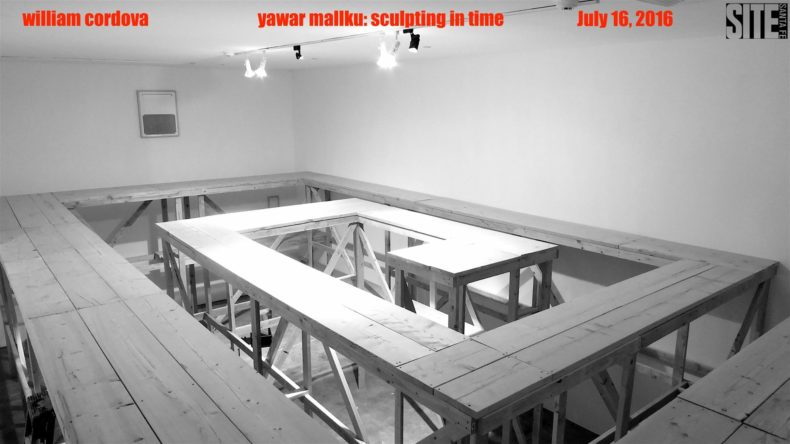SITElines.2016, much wider than a line
July 16, 2016 – January 8, 2017
SITElines.2016: New Perspectives on Art of the Americas is part of SITE’s ongoing biennial series with a focus on Contemporary Art from the Americas.
Cordova will present yawar mallku: sculpting in time. a large-scale installation that exists at the intersection of architecture, politics, and social concerns. Consisting of interrelated parts, including a wooden scaffolding that alludes to Frank Lloyd Wright’s unfinished Pottery House in Santa Fe and clay spheres made from materials sourced from historic locations in Santa Fe, Chicago, and Mexico, Cordova’s installation creates a harmonic balance between the man-made and natural worlds.
This exhibition is the second installment in SITE Santa Fe’s reimagined biennial series with a focus on contemporary art from the Americas and features 35 artists from 16 countries and 11 new commissions organized around intersecting ideas brought together by a team of five curators−Rocío Aranda-Alvarado, Kathleen Ash-Milby, Pip Day, Pablo León de la Barra, and Kiki Mazzucchelli. – exhibition description from SITE Santa Fe
For more information, please visit https://sitesantafe.org/exhibition/sitelines-2016/
Recent press: Artnet News Site Sante Fe,10 Great Artists to See at the SITE Santa Fe Biennial, Artists Discuss their Contributions, by Ben Davis
“The work is a spiral. I was interested in making these connections to time and space and [Frank Lloyd] Wright’s transcendentalist philosophies. And also addressing the sources of those philosophies, which for him are also connected to Asian philosophies, as well as pre-Colombian cultures. I was interested in creating a spiritual space. The spiral is about transformation. The scaffolding is about building. And all these little components inform the narrative that is basically about transcending; that was Wright’s focus—constructing harmoniously with the landscape. So this work is the intersection of all these investigations. And it’s also a labyrinth because you can walk through it.” – William Cordova
